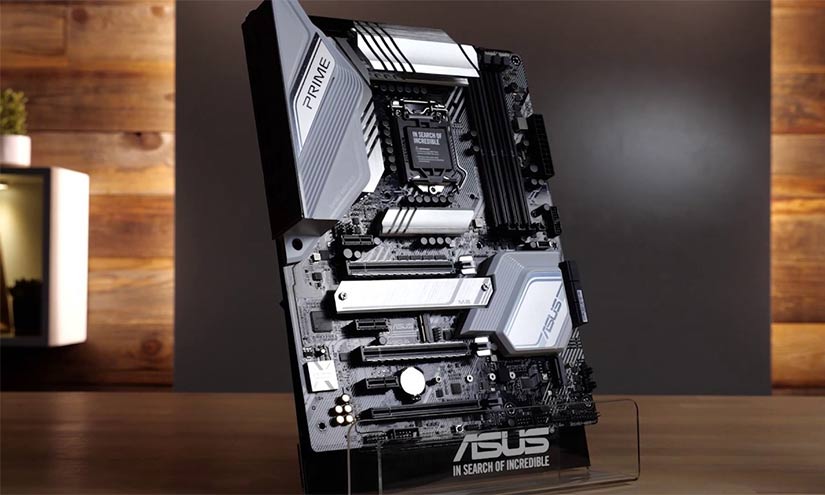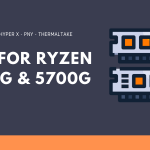The Intel i7 is a high-end desktop CPU series. While basic users and creative professionals prefer the i3 and i9 series, most mainstream PC builders go for either i5 or i7 processor.
The i5 processors are slightly skewed towards gaming, which leaves the i7 series as the perfect all-round CPUs for gaming and professional workloads.
The i7-11700K is the latest addition in this series, having 8 cores, 16 threads, and a TDP of 95W.
Best Motherboard For Intel i7-11700K Buying Guide
Table could not be displayed.But since Intel CPUs are known to consume more power compared to their Ryzen counterparts, you must have an equally capable motherboard as well.
So, here are our picks for the best motherboards to pair up with Intel i7-11700K.
MSI Z590-A PRO: Best Budget Motherboard For Intel i7-11700K
No products found.
The MSI Z590-A PRO is an entry-level Z590 ATX-motherboard. It comes with grey straight lines over the black PCB and heatsinks.
The first thing you’ll notice here is the big VRM heatsinks, which is a pleasant surprise considering it’s a budget board.
It has two full-length PCIe slots and also supports crossfire multi-GPU connectivity. The top slot is metal-reinforced and operates at PCIe 4.0 x16, while the second one is the standard slot that runs at PCIe 3.0 x4 speed. Apart from this, you get two PCIe 3.0 x1 slots too.
Like other ATX boards, you get four DIMM slots here with up to 128 GB memory support and up to DDR4-5333 speed support.
The one thing we loved on this board is the abundance of storage options.
Here you get one PCIe 4.0 x4 M.2 slot, two PCIe 3.0 M.2 slots, and six SATA connectors. Among those SATA ports, four are right-angled with cut-outs into the PCB (for better cable management), while the other two can be found at the bottom edge.
Without doing anything over the top, MSI has covered all the bases in terms of connectivity on the I/O panel, including one USB 3.2 Gen 2 Type-A port, two USB 3.2 Gen 1 Type-A ports, four USB 2.0 ports, and one 2.5G LAN port.
If there’s any potential downside here, then that would be the lack of I/O shroud.
Pros
- 3 M.2 slots
- Cheap price
- 2.5G LAN port.
Cons
- No I/O shroud
ASUS Prime Z490-A: Best Z490 Motherboard For i7-11700K
No products found.
The Z490-A is one of the latest addition to Asus’s non-gaming Prime series.
It has a black PCB (with white stripes in some places), with white-colored heatsinks and I/O shroud, meaning it can blend well if you have a white PC build.
It comes with a 12+2 DrMOS power design. To cool these components, there are three large-sized heatsinks. Thankfully, these heatsinks are located far enough not to obstruct the CPU connector in any way.
The Z490-A has two M.2 slots, with one of them locating underneath the heat spreader.
Although there’s no onboard WiFi, you can use its Key-E slot to plug your PCIe-based WiFi card.
The onboard audio is controlled by Realtek’s S1220A, which is known for its high signal-to-noise ratio and works without any issue whatsoever.
The I/O panel consists of the standard options you expect in a premium motherboard these days: One USB 3.2 Gen 2 Type-C port, five USB 3.2 (2 Gen 1 and 3 Gen 2) ports, two USB 2.0 ports, five 3.5mm audio jacks, S/PDIF port, etc.
You also get a DisplayPort connector in case you want to utilize Intel’s integrated graphics unit.
The one thing we didn’t like in Z490-A is the placement of M.2 slots. You’ll have to remove the GPU(s) to access the screw holes of these M.2 slots. Therefore, you must install the M.2 SSD before installing the graphics card.
On the other hand, easy-to-use BIOS, above-average overclockability, and a simple installation process are its biggest plus points.
Pros
- Good CPU overclocking
- Integrated I/O shield
- Color-coded PCIe slots
- User-friendly BIOS
Cons
- No WiFi out of the box
- RGB lighting on the chipset doesn’t make much sense
GIGABYTE Z590I AORUS Ultra: Best Mini-ITX Motherboard For i7-11700K
No products found.
Unlike other boards in this list, the Z590I Aorus Ultra is a mini-ITX board, meaning you can use it with a mini-ITX or micro-ATX chassis.
It follows a black/grey color scheme with some RGB on the right edge.
It comes with a 10+1 phase design with 90A power stages. Both VRM heatsinks are connected through a Heatpipe, and the side heatsink is further extended to the rear I/O panel, making it one giant heatsink to cool these power components passively.
There are two DIMM slots with a maximum capacity of 64 GB and support up to DDR4-5000 speed.
On the bottom side, you’ll find the only PCIe 4.0 x16 slot. It’s metal-reinforced and can handle beefier graphics cards. You’ll find the three-pin 5V addressable RGB header and the front panel audio connector alongside this slot. The main PCIe 4.0 x4 M.2 slot can be found beneath a combined M.2+chipset heatsink.
The remaining headers, such as USB-C header, 4-pin RGB header, and USB 3.0 header, are located on the top side – right below the four SATA connectors and 24-pin power connector.
There’s another M.2 slot on the backside of the motherboard, and it runs at PCIe 3.0 x4 mode.
The I/O panel of Z590I Aorus Ultra consists of a single USB 3.2 Gen 2×2 Type-A port, three USB 3.2 Gen 2 Type-A port, two USB 3.2 Gen 1 Type-A ports, and two USB 2.0 ports.
The networking options include two WIFi 6 antenna ports (that also provide BT 5.0 connectivity) and a 2.5G LAN connection.
In case you want to flash the firmware, there’s a Q-flash plus button too.
Pros
- Power VRM setup with 10-layer PCB
- Attractive design
- Extra shielding for RAM and PCIe slots
Cons
- None



